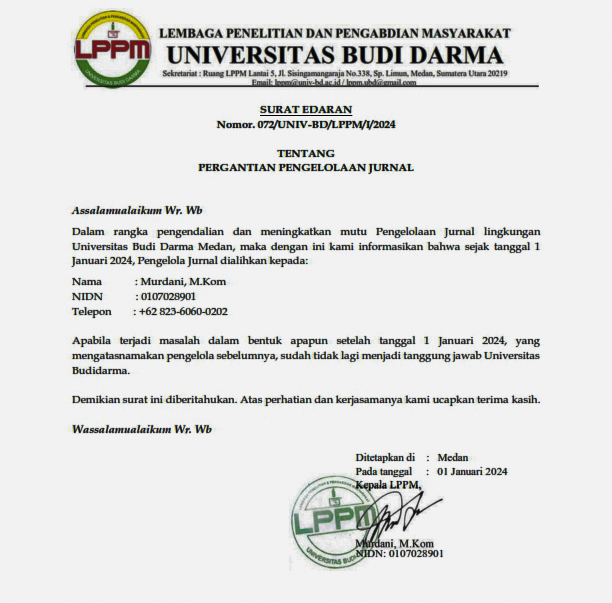Optimasi Akurasi Klasifikasi Pada Prediksi Smokte Detection dengan Menggunakan Algoritma Adaboost
DOI:
https://doi.org/10.30865/json.v4i2.5154Keywords:
Adaboost, Naïve Bayes, Data Mining, Smoke DetectionAbstract
The problem of fire is a threat to nature and the environment. To deal with fire incidents, a smoke detector was created and developed in combination with an IoT device so that incident data can be recorded properly where the recorded data will be used as a reference for increasing the accuracy of early detection. Increasing the accuracy of smoke detectors so that they can be combined with artificial intelligence technology. This research proposes prediction optimization using the adaboost algorithm combined with the naïve Bayes classification algorithm with a measurement matrix based on accuracy, recall, and precision. The results showed that using the adaboost algorithm could increase the resulting accuracy value with a value of 0.987. If you look at the evaluation from the precision side, it also shows that the use of the adaboost algorithm can increase the precision value with a value of 0.971. But the recall evaluation showed that without boost it got a better score with a value of 0.995
References
R. Zafar, S. Zaib, and M. Asif, “False fire alarm detection using data mining techniques,†Int. J. Decis. Support Syst. Technol., vol. 12, no. 4, pp. 21–35, 2020, doi: 10.4018/IJDSST.2020100102.
S. Wang, X. Xiao, T. Deng, A. Chen, and M. Zhu, “A Sauter mean diameter sensor for fire smoke detection,†Sensors Actuators, B Chem., vol. 281, no. September 2018, pp. 920–932, 2019, doi: 10.1016/j.snb.2018.11.021.
E. V. V. D. D. P. C.K. Gomathy, “IRJET- The Fire Alarm System based on IoT,†Irjet, vol. 8, no. 10, 2021.
M. T. Anwar, W. Hadikurniawati, E. Winarno, and W. Widiyatmoko, “Performance Comparison of Data Mining Techniques for Rain Prediction Models in Indonesia,†2020 3rd Int. Semin. Res. Inf. Technol. Intell. Syst. ISRITI 2020, no. December, pp. 83–88, 2020, doi: 10.1109/ISRITI51436.2020.9315460.
F. Marisa, “Educational Data Mining (Konsep dan Penerapan),†J. Teknol. Inf., vol. 4, no. 2, pp. 91–93, 2013.
D. K. Appana, R. Islam, S. A. Khan, and J. M. Kim, “A video-based smoke detection using smoke flow pattern and spatial-temporal energy analyses for alarm systems,†Inf. Sci. (Ny)., vol. 418–419, pp. 91–101, 2017, doi: 10.1016/j.ins.2017.08.001.
R. Yendra, L. Marifni, and I. Suryani, “Klasifikasi Data Mining Untuk Seleksi Penerimaan Calon Pegawai Negeri Sipil Tahun 2017 Menggunakan Metode Naïve Bayes,†J. Sains Mat. dan Stat., vol. 6, no. 1, p. 65, 2020, doi: 10.24014/jsms.v6i1.9254.
E. S. WAHYUNI and M. HENDRI, “Smoke and Fire Detection Base on Convolutional Neural Network,†ELKOMIKA J. Tek. Energi Elektr. Tek. Telekomun. Tek. Elektron., vol. 7, no. 3, p. 455, 2019, doi: 10.26760/elkomika.v7i3.455.
A. N. Rais and A. Subekti, “Integrasi SMOTE Dan Ensemble AdaBoost Untuk Mengatasi Imbalance Class Pada Data Bank Direct Marketing,†J. Inform., vol. 6, no. 2, pp. 278–285, 2019, doi: 10.31311/ji.v6i2.6186.
F. Paquin, J. Rivnay, A. Salleo, N. Stingelin, and C. Silva, “Multi-phase semicrystalline microstructures drive exciton dissociation in neat plastic semiconductors,†J. Mater. Chem. C, vol. 3, pp. 10715–10722, 2015, doi: 10.1039/b000000x.
Fadila, W. I. Rahayu, and M. H. K. Saputra, Penerapan Metode Naive Bayes dan Skala Likert Pada Aplikasi Prediksi Kelulusan Mahasiswa, Rolly Maul. Bandung: Kreatif Industri Nusantara, 2020.
E. Listiana and M. A. Muslim, “Prosiding Seminar Nasional Teknologi dan Informatika, 2017 : Kudus, 25 Juli 2017,†Pros. SNATIF, no. 2015, pp. 875–881, 2017.
X. Zhang and Q. Song, “A multi-label learning based kernel automatic recommendation method for support vector machine,†PLoS One, vol. 10, no. 4, pp. 1–30, 2015, doi: 10.1371/journal.pone.0120455.
G. Chandrashekar and F. Sahin, “A survey on feature selection methods,†Comput. Electr. Eng., vol. 40, no. 1, pp. 16–28, 2014, doi: 10.1016/j.compeleceng.2013.11.024.
M. D. Alkhussayid, “Implementasi Algoritma K-Nearest Neighbors Pada Penentuan Jurusan Siswa,†vol. 4, no. September, pp. 25–36, 2022, doi: 10.30865/json.v4i1.4759.
S. T. Rizaldi and M. Mustakim, “Perbandingan Teknik Pembagian Data untuk Klasifikasi Sarana Akses Air pada Algoritma K- Nearest Neighbor dan Naïve Bayes Classifier,†Semin. Nas. Teknol. Informasi, Komun. dan Ind. 12, pp. 130–137, 2020.
L. Munkhdalai, T. Munkhdalai, K. H. Park, H. G. Lee, M. Li, and K. H. Ryu, “Mixture of Activation Functions with Extended Min-Max Normalization for Forex Market Prediction,†IEEE Access, vol. 7, pp. 183680–183691, 2019, doi: 10.1109/ACCESS.2019.2959789.
Downloads
Published
How to Cite
Issue
Section
License

This work is licensed under a Creative Commons Attribution 4.0 International License
Authors who publish with this journal agree to the following terms:
- Authors retain copyright and grant the journal right of first publication with the work simultaneously licensed under Creative Commons Attribution 4.0 International License that allows others to share the work with an acknowledgment of the work's authorship and initial publication in this journal.
- Authors are able to enter into separate, additional contractual arrangements for the non-exclusive distribution of the journal's published version of the work (e.g., post it to an institutional repository or publish it in a book), with an acknowledgment of its initial publication in this journal.
- Authors are permitted and encouraged to post their work online (e.g., in institutional repositories or on their website) prior to and during the submission process, as it can lead to productive exchanges, as well as earlier and greater citation of published work (Refer to The Effect of Open Access).





